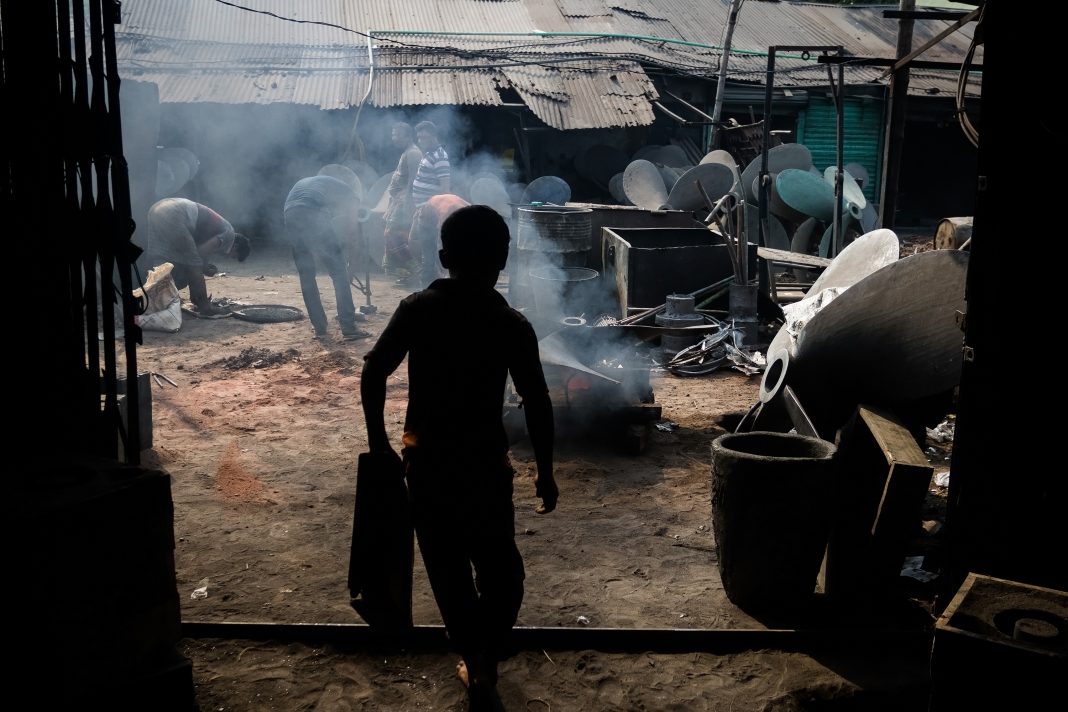Nicky Furlong, Director, Public Sector, Health & Life Sciences at SAS UK, describes how new developments in analytics can support the fight against global human trafficking
One of the most disturbing things about global human trafficking is just how pervasive it is.
According to the International Labour Organisation (ILO), an agency of the UN, 49.6 million people were trapped in some form of human slavery in 2021 – 27.6 million of whom were in forced labour and 22 million in forced marriage.
Of the 27.6 million in forced labour, 6.3 million people were the victims of commercial sexual exploitation. The ILO also points out that the problem of global human trafficking has “risen significantly” in recent years – and occurs in almost every country of the world.
Tackling global human trafficking is a major challenge because of the complex network of elusive gangs operating across borders
Tackling global human trafficking is a major challenge for national and international crime agencies because of the complex network of elusive gangs operating across borders. As the World Economic Forum (WEF) says in its own literature on the subject, “around 172 countries form part of the chain of exploitation … it’s a daunting picture”.
But the WEF also identifies a real and, we believe, powerful solution. It says: “The only way to drill down into what’s really going on and to develop intervention strategies is for data to be shared.”
Untangling the web to dismantle organised crime networks
While there’s an urgent need to dismantle serious organised crime networks, doing so is a resource-heavy task.
But innovations in analytics – driven by AI and machine learning – now promise to lead crime agencies to the perpetrators far quicker than relying on victims and witnesses to come forward. Victims are, after all, extremely vulnerable and may be understandably reluctant to speak to the authorities, certainly without compelling evidence to support a successful prosecution.
We’re already seeing how analytics could help to tackle global human trafficking and other crimes. Working with a major police department in the US, we developed a sophisticated text analytics-based system capable of extracting actionable textual and geospatial patterns from raw crime data. The data is processed and analysed in a single system and then presented to enforcement teams on visual dashboards – enabling them to uncover patterns indicative of large-scale criminal activity from seemingly isolated incidents such as a drug offence.
Applying Natural Language Processing (NLP) to text analytics enables officers to auto-categorise data by keywords, set their own search criteria and make sense of the vast amounts of data generated through text messages and social media interactions using data visualisation tools. In the case of the US police department, this method allowed investigators to identify trends in global human trafficking, theft and violence for 45,000 police incident narratives in a matter of minutes.
Geocoding to filter data locations
Geocoding and reverse geocoding are also highly effective ways of filtering data to reveal locations that may be of interest.
The lessons learned through this project can be applied to the fight against global human trafficking in the UK and beyond. With textual and geospatial insights, police forces can not only monitor activity locally and nationally but also collaborate with colleagues in other agencies, NGOs, and international organisations to tackle cross-border global human trafficking.
We have also worked closely with Peace-Work, part of the global Data for Good movement, empowering volunteers by providing them with the SAS Analytics data and meta-analysis tools they need to do their invaluable work.
By supplying this data, Peace-Work’s activist volunteers were able to identify new patterns in raw data supplied by various agencies tracking the movement of exploited people.
Where else can we look to tackle global human trafficking?
There are other data sources crime agencies can tap into as well, including financial data. Ruthless gangs and traffickers are ultimately driven by money, which is usually laundered and deposited in legitimate accounts.
However, while transactions might look legal, applying advanced analytics can highlight patterns and anomalies in large amounts of data that would have otherwise gone undetected. Banks are the gatekeepers for this data, so it’s vital that they work with organisations like the National Economic Crime Centre to report suspicious transactions.
Traffickers also need the means of transporting people around the world. These are often underworld and highly dangerous methods of forced travel. But humans are often trafficked by legitimate, mainstream means, in plain sight, including commercial flights. And certain routes are more heavily used by traffickers than others. Accordingly, border forces and airlines can be empowered with the right data tools to monitor potential illegal activity on certain routes and flag any concerns quickly.
Ultimately, every new pattern spotted means that potential action can be taken to turn the tide of global human trafficking, enabling victims to rebuild their lives and sending a clear message to perpetrators that they will be caught.
This piece was written and provided by Nicky Furlong, Director, Public Sector, Health & Life Sciences at SAS UK.











